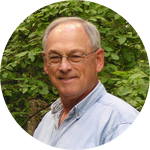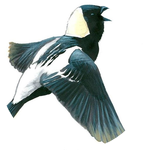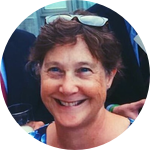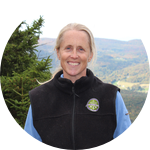About This Project
Grassland birds are declining in the northeastern U.S., largely due to the financial pressures that force farmers to mow their fields during the weeks when grassland birds are nesting. The Bobolink Project uses money given by conservation-minded donors to help conservation-minded farmers delay their harvests. The 2016 Bobolink Project season was successful with about 450 baby Bobolinks saved! Now we need your help to raise funds for a grassland bird field tech for the 2017 season.
Ask the Scientists
Join The DiscussionWhat is the context of this research?
As a group, grassland-nesting birds – which include meadowlarks, Bobolinks, Grasshopper Sparrows and others - exhibit some of the most worrisome population declines of any native species. From 1966 to 2012 the North American Breeding Bird Survey reported that 15 of 19 (79%) grassland-breeding bird species found in the eastern U.S. and Canada declined in numbers, and no species significantly increased.
The issue, in terms of grassland bird conservation, is one of timing and economics: birds settle into fields for nesting in May, but the fields are cut in early summer when the monetary value of the hay crop is highest. This schedule results in a severe loss of eggs and nestling birds, and breeding adults may also be killed.
What is the significance of this project?
The Bobolink Project is a proven win-win solution, for both birds and farms.
In 2016 we found that in the future we would need additional funds to hire at least one field tech to visit the farms and assess bird numbers and nesting success. Understanding the number of young birds successfully saved from farming machinery is an important element in evaluating The Bobolink Project’s utility as a conservation tool and also in ongoing fundraising efforts. We believe that this funding for field assistants should be raised separately from the funds that go directly to the farms in order to maximize the number of farms we can include in the program.
What are the goals of the project?
This aspect of The Bobolink Project is simple and straightforward. After farms have been selected as participants in 2017, field assistants will be tasked with visiting those sites during late May – early June, and again during mid-July – early August. During the initial visit, point count data will be collected at each farm to provide an index of the number of pairs of breeding Bobolinks present. During the second visit, each farm will be revisited, and counts based on walking transects will be used to indicate numbers of juvenile birds that were fledged.
Additionally, each participating farm will be paired with a nearby non-participating farm, and data collected at these non-participating sites will be used to compare the benefits accrued by farm participation in The Bobolink Project.
Budget
The success of The Bobolink Project is measured in dollars raised, number of farms participating, and, most importantly, in the number of Bobolinks and other grassland birds that successfully raised young on the participating fields. In order to measure this success we need to send out field technicians to survey the participating farms for grassland bird abundance. Each farm must be visited twice: once early in the breeding season and again at the end of the breeding season.
In 2016 a total of 16 farms were included in The Bobolink Project. Assuming that 20 farms will be selected as participants in 2017 (this number is impossible to precisely know until conservation donations have been received during March 2017 and bids of farmers interested in participating have been processed in late March 2017), field work would entail approximately 300 hours of time during late-May through early August.
Endorsed by
Meet the Team
Affiliates
Team Bio
The Bobolink Project team consists of conservation staff from Mass Audubon, Audubon Vermont, Audubon Connecticut, and faculty and students from the University of Vermont and the University of Connecticut.
Jonathan Atwood
I am a Bird Conservation Fellow, concentrating on grassland bird conservation, at Mass Audubon in Lincoln, Massachusetts. I have been a practicing ornithologist and conservation biologist for 30 years, specializing in integrating behavioral studies of rare and endangered bird species with habitat conservation planning. While working at Manomet Center for Conservation Sciences during the early 1990’s I collaborated in the analysis of the first 30 years of Manomet’s landbird banding effort, spearheaded federal protection of the California Gnatcatcher under the U.S. Endangered Species Act, led a long-term study of factors affecting Least Tern colony site selection, and contributed to early studies of Bicknell’s Thrush. From 1998-2011 I directed the Conservation Biology Program at Antioch University, New England, taught classes in Ornithology, Ecological Research Design, and GIS, and mentored over 70 graduate students working on various wildlife studies. During 2011-2013 I worked as Science Director at Biodiversity Research Institute in southern Maine.
Margo Servison
As the new Conservation Program Coordinator at Mass Audubon, I am using the combination of my conservation biology background and recently achieved MBA to support the conservation efforts and outreach of Mass Audubon's Bird Conservation and Ecological Management Department.
Previous work has included Common and Roseate Tern monitoring, an extensive literature review of over 90 species of birds that are seriously declining in Massachusetts, the creation of the Massachusetts State of the Birds 2013, and coordination of the Massachusetts Foresters for the Birds program.
I have an MBA from Babson's F.W. Olin Graduate School of Business and a bachelor's degree in Environmental Studies (focus: Biology) from Hamilton College.
Allan Strong
I am a faculty member in the Rubenstein School of Environment and Natural Resources at the University of Vermont. Since 2002, I have been working on grassland bird conservation in the Champlain Valley of Vermont and New York. My research has focused on finding conservation solutions that maintain economic viability for farmers while conserving populations of Bobolinks and Savannah Sparrows. I have worked on a wide variety of bird conservation issues, from wading birds and White-crowned Pigeons in the Florida Keys, to neotropical migrants in Jamaica, to Bicknell's Thrush in the Green Mountains of Vermont.
Stephen K Swallow
I once intended to become a field ecologist, working in wildlife management. However, experience brought me to public policy and human dimensions of conservation, leading me into environmental economics. So I followed a B.S. from Cornell in natural resources with an M.S. and Ph.D. from Duke in resource economics. After 23 years in Environmental and Natural Resource Economics at the University of Rhode Island, I moved to the University of Connecticut in 2011. With colleagues at URI and friends at EcoAsset Markets Inc, and with USDA Conservation Innovation Grant funds, we started an enterprise-based project in Jamestown, RI focused on bobolinks. At UCONN, this initiative became a USDA / NIFA funded research endeavor seeking to develop better ways to bring the value of the environment into the decisions of individuals and businesses, particularly farmers, who need to balance sustaining a business with conservation initiatives. The Bobolink Project has used some innovative approaches to gaining public support for a specific good - managing hayfields for grassland nesting birds during the critical summer season.
I now advise The Bobolink Project group on ways to continue improving The Project to maximize the amount of acres that are conserved and the number of Bobolinks that are produced.
I also teach environmental valuation and research better ways to integrate the environment into decisions, markets and the economy. Projects include coastal habitats, valuation and trading of water quality or carbon credits, recognition of co-benefits from environmental farming, watershed management, coastal resilience.
Leslie MacLise-Kane
I am the Director at the Audubon Center at Bent of the River, and oversee the education, public policy and conservation programs at the 700-acre nature center and sanctuary. In addition, I am the Team Leader for Audubon Connecticut’s Shrub and Grassland initiative. I currently serve as president of the Southbury Land Trust and am on the board of the CT Urban Forest Council. I previously worked as Environmental Planner for the Town of Guilford, CT working with many town commissions, acting as Tree Warden and as the administrator of the town’s Geographic Information Systems. I have also worked for UCONN Cooperative Extension and The Nature Conservancy. I have a Master’s degree in Landscape Architecture from the University of Massachusetts at Amherst and bachelor’s degrees in Anthropology and Geography from Mount Holyoke College.
Margaret Fowle
I am a conservation biologist with Audubon Vermont's Endangered Species Recovery Program and Champlain Valley Bird Initiative. I work with private landowners to promote management activities that enhance grassland and shrubland habitats for priority bird species in the Champlain Valley. Most recently, I have been participating in a national effort to study Golden-winged Warblers, and helped put geolocators on 37 golden- and blue-winged warblers in the southern Champlain Valley in the spring of 2016. I also surveyed many of the Vermont fields enrolled in the Bobolink Project in 2016.
Prior to coming to Audubon in 2009, I coordinated peregrine and bald eagle recovery efforts in Vermont. I continue to be involved in the recovery efforts of these species. I obtained my Master's degree in wildlife biology from the University of Vermont, where I studied the population of double-crested cormorants on Lake Champlain.
Mark LaBarr
I am Conservation Biologist and Program Manager and oversee conservation projects, project staff and volunteers for Audubon Vermont including the Champlain Valley Bird Initiative and the Endangered Species Recovery Project. As a biologist my focus is on the Common Tern Recovery Project as well as efforts to better understand breeding populations of Golden-winged Warblers and other grassland and shrubland obligates in the Champlain Valley. I have a master bird banding permit and run the Audubon bird banding station at the Green Mountain Audubon Center. I work in close cooperation with partner agencies and organizations such as the Vermont Fish and Wildlife Department, the Natural Resources Conservation Service, and the University of Vermont.
I am the Chair of the Scientific Advisory Group on Birds for the VT Endangered and Threatened Species Committee, and served on the Bird Technical Committee for the State's Wildlife Action Plan.
I obtained my undergraduate degree in Wildlife Biology from the University of Vermont and a master’s degree in Education from St. Michael’s College.
Lab Notes
Nothing posted yet.
Additional Information
The Bobolink Project started in 2007 in Jamestown, Rhode Island. It brought residents together to protect habitat for the Bobolinks that nest each year in the state's hayfields. By 2011, The Bobolink Project covered all of Rhode Island and parts of Vermont. In 2016, to expand the geographic scope of The Project and establish a more sustainable administrative structure, coordination of The Bobolink Project shifted to a collaborative partnership among Mass Audubon, Audubon Vermont, and Audubon Connecticut. The Project’s founders, Drs. Stephen Swallow and Allan Strong, continue to be deeply involved in the Project.
There are many hay farmers in New England who are willing to delay their harvest schedules for the sake of nesting birds such as Bobolinks, but to do so costs money – late season hay is less valuable commercially than early season hay. By providing financial support to farmers who are willing to manage their fields for grassland birds, The Bobolink Project allows participating farmers to delay their harvesting schedules, thereby “buying time” so grassland birds can successfully nest on working farms.
The project's process involves the following steps:
1. Funds are raised from donors and pooled together.
2. Farmers submit bids ($/acre) to enroll their farms in The Bobolink Project.
3. Through a reverse auction process, farms are then selected in a way that maximizes the amount of land that can be protected given the amount of donations that have been received.
In 2016 a total of $42,000 was received from donors, and $36,500 of this amount was paid to 16 farmers owning about 527 acres in Vermont, Massachusetts, and New York. $5,500 was used to support administrative costs associated with the Project. Expenses associated with field monitoring of bird numbers and nesting success on participating farms were absorbed by the collaborating organizations.
Project Backers
- 7Backers
- 5%Funded
- $269Total Donations
- $38.43Average Donation








